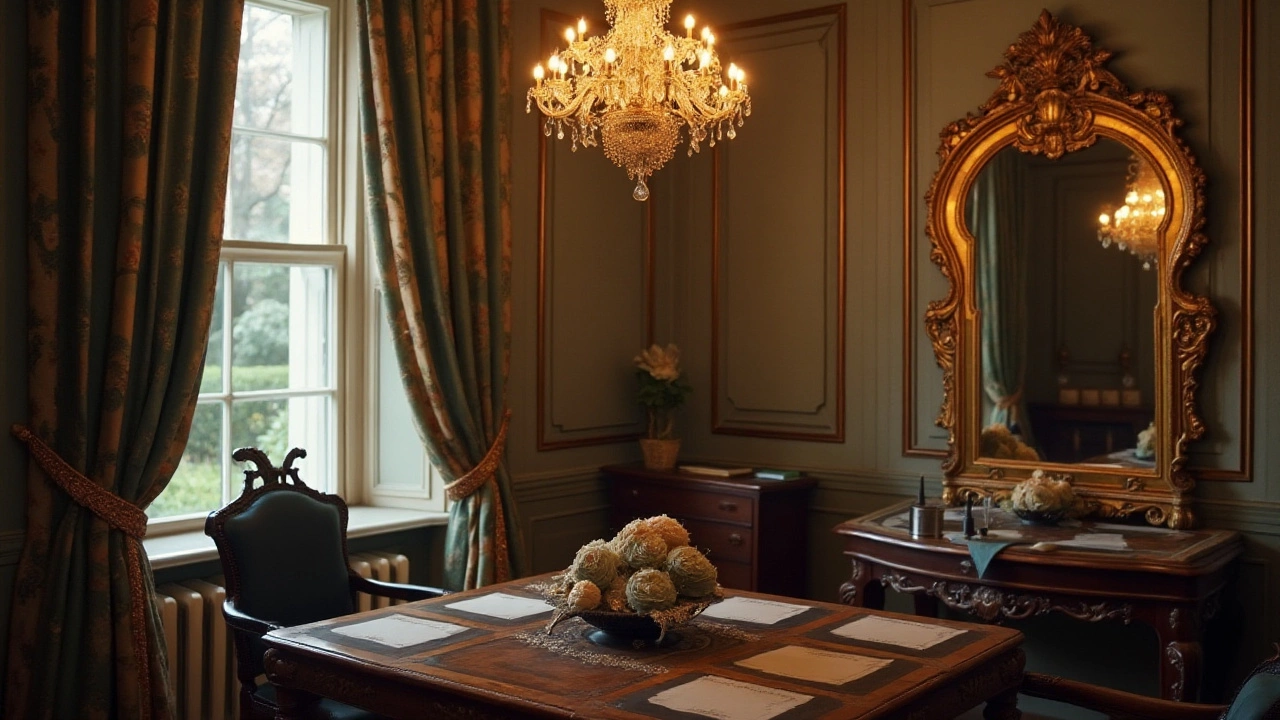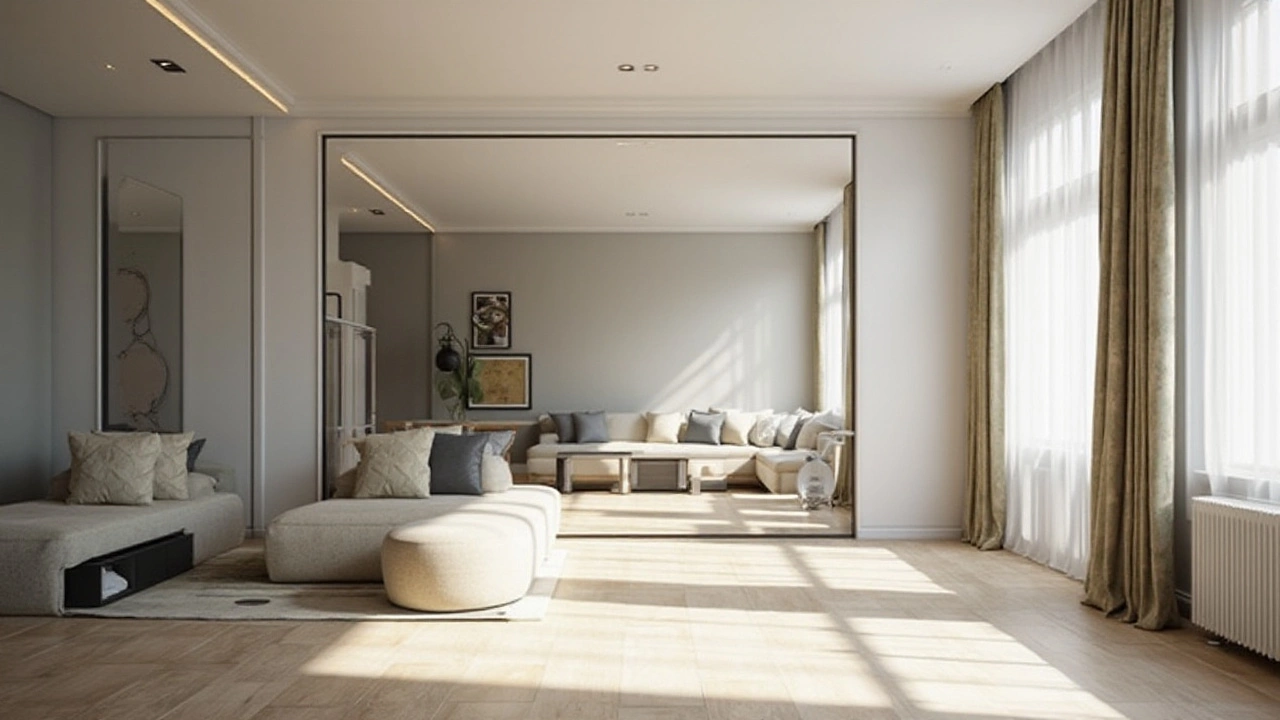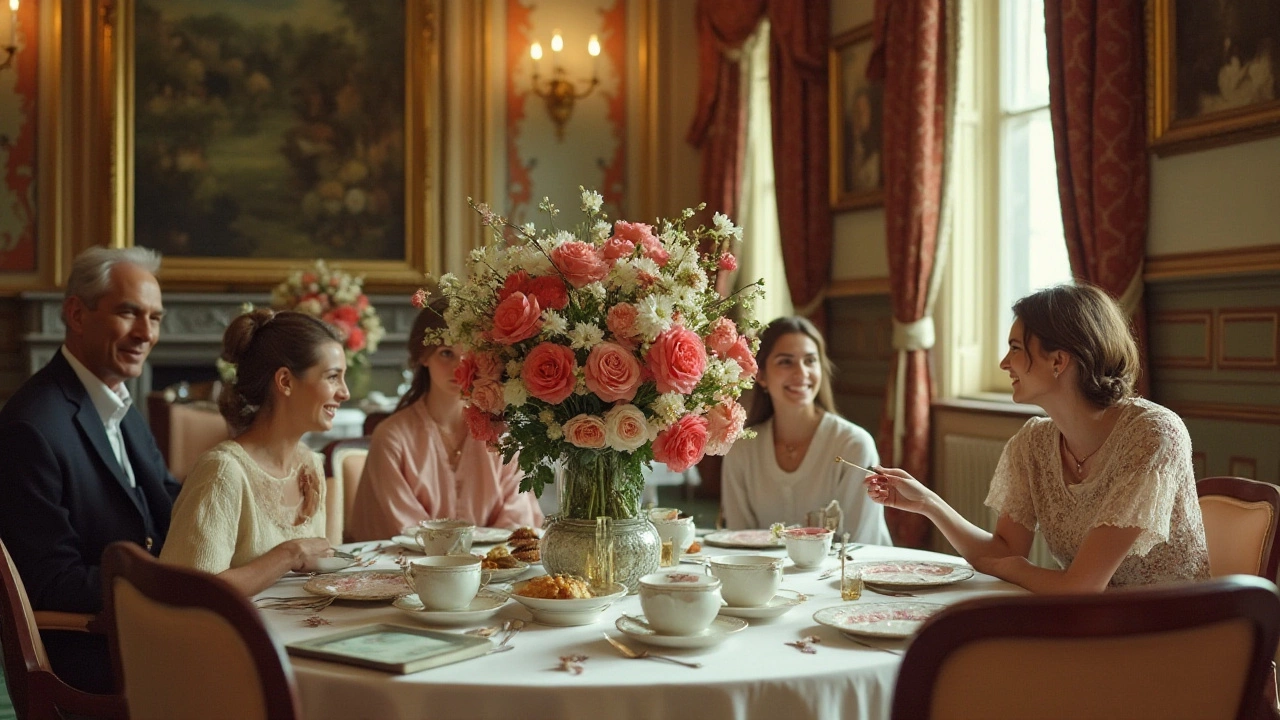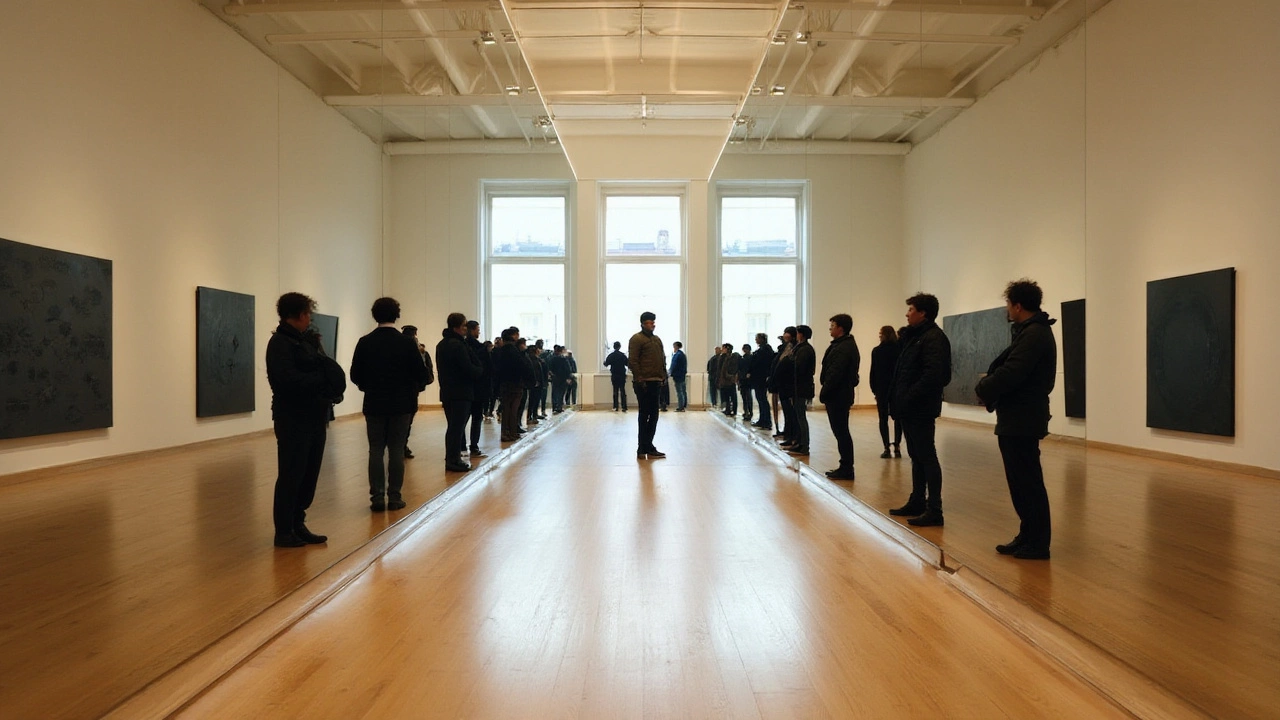Exploring Mirror Reflections: Infinite Reflections and More
 Jan, 5 2025
Jan, 5 2025
Mirrors have long captivated human imagination, acting as a portal to reflection and self-exploration. But what happens when you position a mirror in front of another mirror? This simple arrangement can create a visual spectacle known as "infinite reflection"—an optical illusion that seems to stretch on forever, captivating both the curious mind and the keen eye.
In this article, we will venture into the scientific principles that illuminate this phenomenon, explore its cultural imprints, dismantle some persistent myths, and even offer a few practical insights for those tempted to try this at home. As we journey into the reflective depths, perhaps we'll reflect on what mirrors say about us and our endless curiosity.
- The Science Behind Reflective Infinity
- Cultural Significance and History
- Common Myths and Misconceptions
- Practical Uses and Tips
The Science Behind Reflective Infinity
When two mirrors face each other, they create a mesmerizing visual illusion known as "infinite reflection." Anyone who has peered into a mirror-lined elevator might recall the endearing and endless tunnel effect. This happens because light bounces back and forth between the two mirror surfaces. As it reflects, each subsequent image appears slightly dimmer than its predecessor due to the light's absorption and scattering on the reflective coatings. Physics enthusiasts find this interaction delightful, as it demonstrates principles of optics, including specular reflection—where each light ray reflects at the same angle at which it strikes the mirror surface.
In essence, this cascade of images allows us to conceptualize infinity—a brilliant concept that has intrigued creatives and scientists alike. The technical explanation involves light paths, which maintain a consistent angle due to the plane surfaces. However, they gradually appear smaller, as the human eye perceives them retreating into perceived depth. Newton's laws affirm that as the distance increases, the intensity of the reflected light decays exponentially, leading to reduced visibility of deeper reflections, even though the pattern extends indefinitely.
Understanding The Optical Limitations
Besides light absorption, another factor constraining the clarity of infinite reflections is the variation in mirror alignment. Even minuscule imperfections or deviations from true parallelism result in image distortion. This minor angular difference accumulates, especially across many reflections, creating a distorted or skewed reflection. Emphasizing the quality of the mirror surfaces becomes relevant here, as the smoother and more uniform the surface, the sharper each subsequent image will appear. Yet, paradoxically, it's impossible to achieve absolute perfection in mirrors, meaning some degree of distortion is inevitable.
"Mirrors serve as a window to understand light's behavior, revealing endless potential and the charming complexities embedded in a straightforward reflection." —Optics Research Journal
This domino effect, which is the cascading nature of these reflections, contributes to the vast sea of visual applications where infinite mirror setups have found niche uses. From art installations to futuristic decor, the magic of seeing the endless can captivate audiences who stand mere inches away. With all these technicalities at play, understanding light's interaction with reflective surfaces goes beyond just photography and decoration; it's a gateway into exploring the nature of how we perceive reality.

Cultural Significance and History
Mirrors have been more than just functional household items; they carry with them a rich tapestry of history and cultural significance. Reflections in mirrored surfaces have been linked to introspection, vanity, and even the mystical realm. In ancient cultures, mirrors were often considered magical, gateways to another world. For instance, in many Indigenous American tribes, mirrors were used in shamanistic rituals to explore the unknown realms. Ancient Romans believed mirrors could capture the soul, associating broken mirrors with bad luck stretching over seven years.
Moving into the Renaissance, European artists were enchanted by mirrors, not only for their practical use in creating lifelike paintings but as a symbol of human depth and emotion. The well-known painting, "The Arnolfini Portrait" by Jan van Eyck, showcases a convex mirror as a focal point in its detailing, reflecting space and time. Later, with the advent of optical technology, mirrors came to symbolize progress and scientific inquiry.
A fascinating example is the Claude Glass, a small mirror used by 18th-century painters and travelers to reflect scenes in softened, darker hues, offering a romanticized view of landscapes. This illustrates how mirrors were employed to alter perception for artistic pursuits. In Asia, particularly in China and Japan, mirrors hold an esteemed place, often linked to deities. In Shinto rituals, they symbolize purity and divine presence, believed to reflect the innermost self.
"Mirrors are a part of our collective consciousness, reflecting not only our features but our cultural evolution," writes historian Dr. Emily Carlisle.
Mirror reflection also finds footing in folklore across cultures. In Slavic mythology, mirrors were used as tools to communicate with spirits, believed to reveal the truth behind one's facade. This intertwines with the notion of the 'soul mirror,' a concept prevalent in various myths that emphasize the reflective surface as a keeper of secrets and harbinger of truths untold. Through these diverse cultural lenses, it is clear that mirrors are much more than a daily utility; they serve as symbols of introspection, mystery, and connection with the past.

Common Myths and Misconceptions
One might think that placing a mirror in front of another mirror is straightforward, but there are several myths surrounding this curious setup that have captured imaginations for centuries. The most prevalent misconception is the belief that standing between two mirrors creates a portal to another dimension. This myth finds its origins in various cultural tales and has been fueled by its portrayal in films and literature. It's important to separate fiction from reality. What you're witnessing is a physical phenomenon of repeated reflections, rather than a mystical gateway.
Another persistent myth involves the belief that infinite reflections can absorb energy, thereby weakening the ambient light in the room. While it's true that mirrors reflect light, they don't absorb enough energy to significantly alter the room's brightness perceptibly. In reality, mirrors reflect most of the light that hits them, with only a minimal percentage absorbed as heat. This misunderstanding likely comes from a rudimentary grasp of physics and the way light and energy function in a confined space.
Additionally, some people worry about the "bad luck" associated with mirrors facing each other, often linked to superstitions about breaking mirrors. This has no scientific backing, but it's fascinating how deeply rooted this belief remains in certain cultures. The superstition stems from a time when mirrors, costly and rare, were deemed mysterious. These beliefs sometimes take on a life of their own due to societal traditions and shared cultural narratives.
If you ever heard the theory that infinite reflections cause mental disorientation or dizziness, you can rest assured it's mostly anecdotal. In spaces where mirrors create complex reflections, the sensation can be intriguing or slightly disorienting, but it does not pose any psychological risk. In the world of optics, partial absorption and subtle transfer of energy between surfaces provide an intriguing exploration of reflections, without spinning any dangerous physical webs.
What's equally interesting is the role of these assumptions in cultural expressions. In many art forms, this arrangement often symbolizes themes of introspection and identity, creatively misinterpreting the science of mirror reflection to ask deeper human questions. According to physicist Dr. Lisa Randall, "Mirrors and reflections capture the mind's attempt to expand, using what can be perceived to inspire what can be imagined." This quote underscores the bridge between science and the collective human consciousness that reflects more than literal truths.

Practical Uses and Tips
Creating an infinite mirror setup isn't just a fascinating trick—it can also serve several practical purposes in daily life. One everyday application is in the realm of interior design. By placing mirrors strategically, decorators can make spaces appear much larger than they are. The illusion of endless space can transform a cramped room into an expansive one, providing an immediate aesthetic boost without the need for costly renovations. An infinite mirror arrangement can serve as a captivating centerpiece; it draws attention and engages guests, making it a conversation starter for any room.
Curiously, the concept of infinite reflection has been utilized in modern technology as well. Some digital devices incorporate what is known as "infinity mirrors"—a series of lights and reflectors that create the illusion of depth, often for decorative purposes. This is especially popular in the realms of gaming and ambient lighting technology, where enthusiasts go to great lengths to enhance the visual appeal of their setups. Another sector where mirrors play a transformative role is theater and film production. Mirrors help create special effects, simulating depth or duplicating space, which adds a layer of visual intrigue that captivates audiences.
Here's a practical tip for those wanting to experiment at home: consider using strong frames for the mirrors to maintain stability. Since reflections multiply rapidly, any slight misalignment can disrupt the illusion's clarity. Using mirrors of the same size can also enhance the visual effect. While some enjoy the intricacies of making a personal art project out of mirror reflection, this setup does not require massive effort—only an eye for details. Be mindful, however, of where you position these mirrors. Since they bounce light, they can inadvertently increase the brightness to uncomfortable levels if placed incorrectly.
"Mirrors are deceiving; they show what you want to see and distort what you fear"—a perspective by renowned designer Jonathan Banks, illustrating the psychological intrigue of mirrors.
Such reflections encourage us to contemplate the boundary between reality and illusion. Safety is another crucial factor to consider, especially in homes with children or pets. Ensure that mirrors are securely fastened to avoid accidents. Also, it can be worth exploring different types of mirrors, like tinted or smoked variants, which offer unique visual effects. As a simple Do-It-Yourself project, creating your mirror illusion can awaken creativity, providing both educational and aesthetic value.